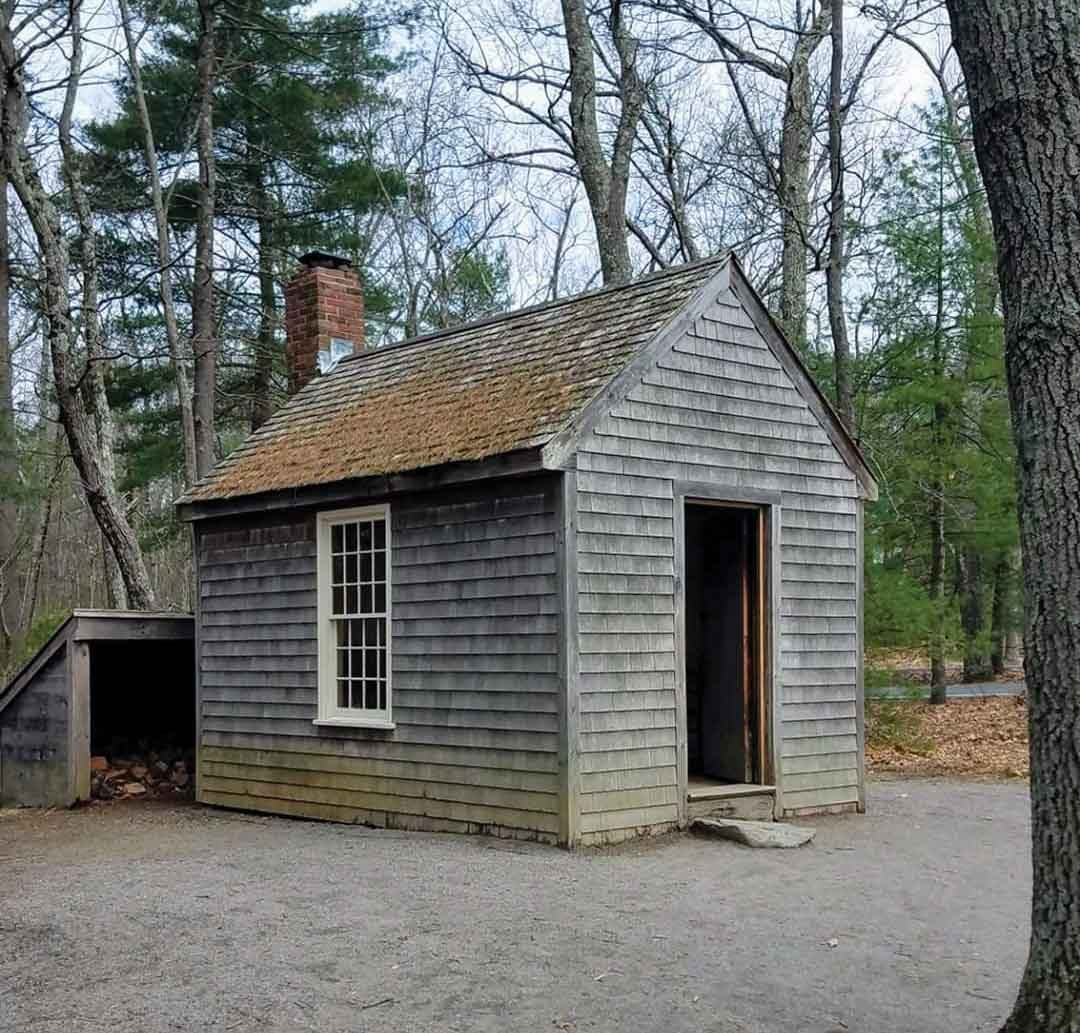On September 6, 1847, Henry Thoreau left his small house at Walden Pond and moved back into the town of Concord. Having lived at Waldon Pond for over two years, he was, he would write, “a sojourner in civilized life again.”
Less than a month after leaving Walden, Thoreau moved into the home of his friend Ralph Waldo Emerson. Emerson was going to England for a one-year lecture tour, and Thoreau moved to Emerson’s home in order to watch over the family and take care of the chores while Emerson was away, living in what Thoreau called “dangerous prosperity.”
But what about Thoreau’s cabin? What happened to that once he was done with it? That is a story unto itself!
To begin with, Thoreau was not particularly attached to his cabin. He would later say in Walden that he was not “anchored” to it, and once he left Walden Pond, he physically and emotionally left his house behind. As it was on Emerson’s land, it was now Emerson’s problem to deal with.
And Emerson had plans for the house; he immediately rented it to his gardener, Hugh Whelan, who would move “the cottage” to where Thoreau’s bean field had been and expand the house for him and his family. Sadly, this never happened. Whelan soon abandoned his family and left Concord, never to be heard from again. The house sat empty for many months, beside the cellar hole that Whelan had dug for it, which can still be seen in Walden Woods today.

Site of Thoreau’s original cabin
In September 1849, the house was sold to Brooks Clark, who moved it to his farm near the Estabrook Woods, north of town. It was moved around Clark’s property several times as his use for it changed when it was needed at new locations. Initially it was used to store grain - probably corn.
In 1867, it was moved to the northwest pasture of Clark’s farm. Clark then pilfered the cabin for parts as he repaired various buildings around his property. Most sources agree that, over time, the house boards were used to repair a barn. Another source wrote that the cabin was demolished and the boards were used to enlarge the Clark farmhouse.
Ellery Channing noted the cabin’s windows were already gone when he saw it in 1863. In 1868, the roof was removed and used to cover a pig sty. In that same year, Channing wrote that he saw the cabin “in ruins,” the structure having recently been pulled down. Later, in 1885, the floor and some timbers were also reported to have been used to make a shed on the side of a barn. Eventually, that shed collapsed and the wood was used to repair the barn itself. Thoreau’s front door was used over time in a variety of spots on the Clark property.
Today, virtually nothing remains of the original house. There are bits and pieces of brick, plaster and nails, as well as larger pieces, including an original timber, in the collections of the Concord Museum and the Walden Woods Project, but that’s all. The house site itself at Walden has become a pilgrimage site for lovers of Thoreau from all around the world.
Thoreau left Walden because he had “several more lives to live.” It is evident that his house did, too! Today, both the man and his cabin live on in our hearts and minds as symbols of simplicity and living in harmony with nature.
Photographs by Richard Smith


